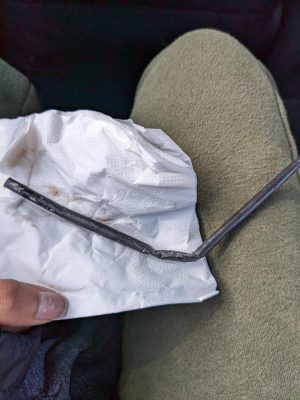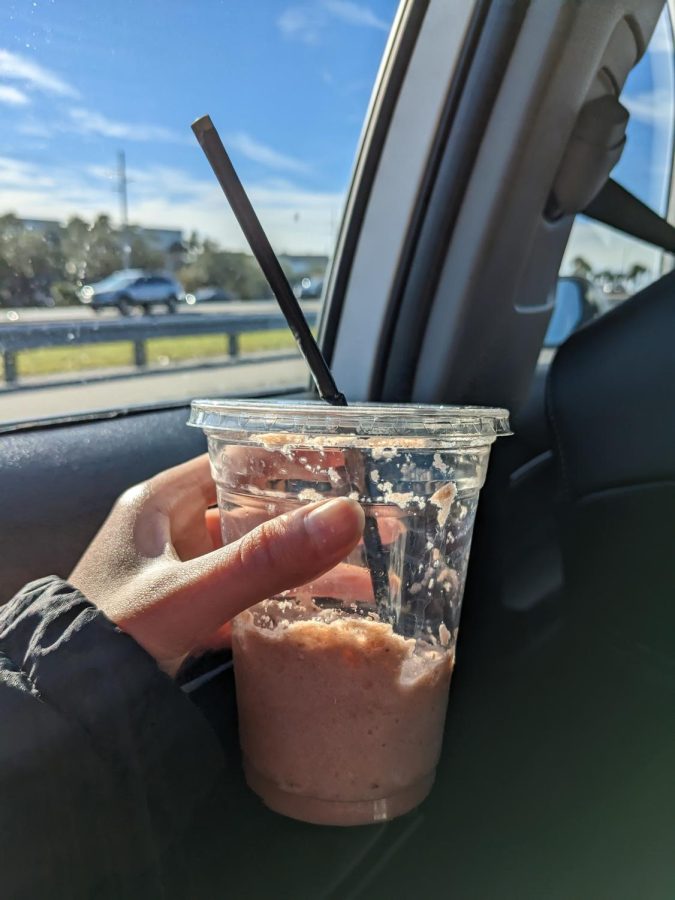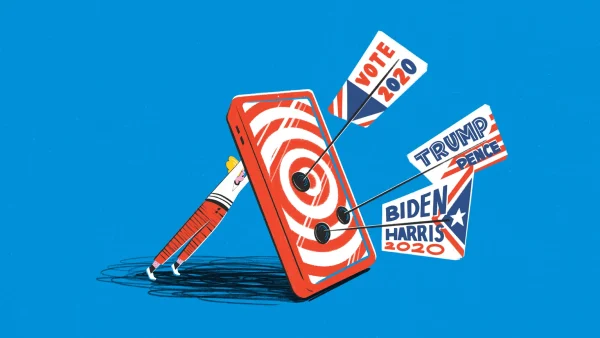Paper straws are a failed solution, but a new model could be the answer
This is the strawberry-banana smoothie I tried to drink out of the pictured paper straw
After enjoying a few sips of my strawberry banana smoothie, all I could taste was the unpleasant flakey paper of the straw.
It had not only bent but had also folded in on itself, blocking any drink from flowing upward. I threw out the straw and got a new one, another paper straw, for that was all the restaurant had to offer. That straw, too, failed to retain its shape, and so I finished the smoothie without one.
Paper absorbs liquids quickly, and its structure and rigidity slip away just as fast. As found in studies conducted by the Korea Research Institute of Chemical Technology (KRICT), after 60 seconds, an average wet paper straw bearing 25 grams of weight bends. Thus, straws of said material have proven unreliable as they regularly become unusable.
Paper straws win out as more eco-friendly with the coated straws decomposing faster than traditional plastic straws, yet the soggy-straw problem persists.
In order to resolve this issue, some brands have produced coated paper straws (the same material plastic bags and adhesives are) that prevent the paper from coming into contact with moisture so rapidly.
However, these straws take a long time to decompose, especially in oceans. This undermines the purpose of transitioning away from plastic straws, which take up to 300 years to decompose in comparison to three days for straws solely composed of paper.
Nevertheless, paper straws win as more eco-friendly and the coated straws decompose faster than traditional plastic straws, yet the soggy-straw problem persists. This is what KRICT sought to fix, and they did.
The team discovered a certain coating of cellulose nanocrystals (PBS/BS-CNC) that decomposes completely in 120 days and retains its form, holding 50 grams even after 60 seconds. On the other hand, the extent to which these straws remain intact is unclear because the specific type of paper straw that it is compared to isn’t explained and could be of lower quality than those typically found on the market and because the full length of the durability of the new straws wasn’t proven. Despite this, these new straws have proven to be long-lasting.

Even if or when these improved straws reach the mass market, they still won’t be satisfactory. Paper straws eventually will fold into themselves by their nature and cannot match up to their plastic counterparts when it comes to retaining structure, meaning companies are going to keep selling plastic straws and people are going to keep buying them.
But, we can still encourage the production of more environmentally-friendly plastic straws. Such includes thinner straws, both in thickness and width. This would mean less plastic is used, which means that not only will they decompose faster, but they will also use less material: a positive for the industries making them.
In addition to that, people should try to take advantage of reusable straws, such as those of metal or bamboo, when possible in order to minimize the amount of waste. Of course, the demand for disposable straws will remain, meaning that straws like that of KRICT and ones that use less plastic are needed as alternatives to paper straws.
All in all, paper straws are inherently obsolete. They are not the solution to the immense amount of non-biodegradable waste from straws.
A true solution must be found, for there are already too many detriments to the earth’s health, and this is the last straw.

Saniya Mishra is a senior, writing for her third and final year on staff, busied by her many passions. She is an artist who cares deeply about the world....






























































































